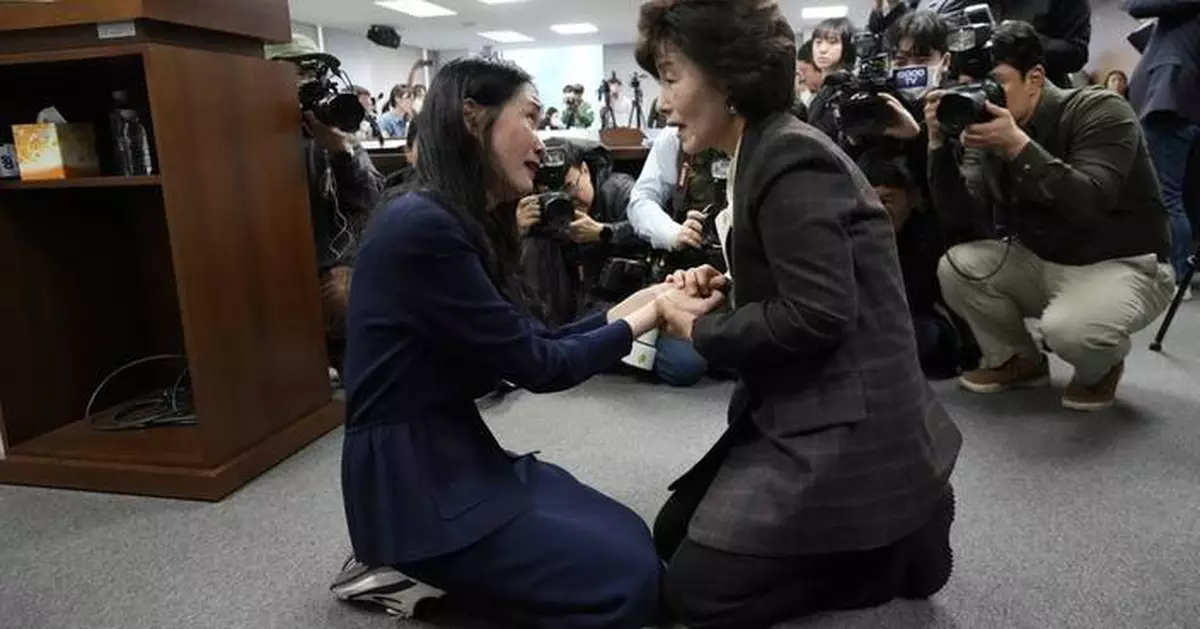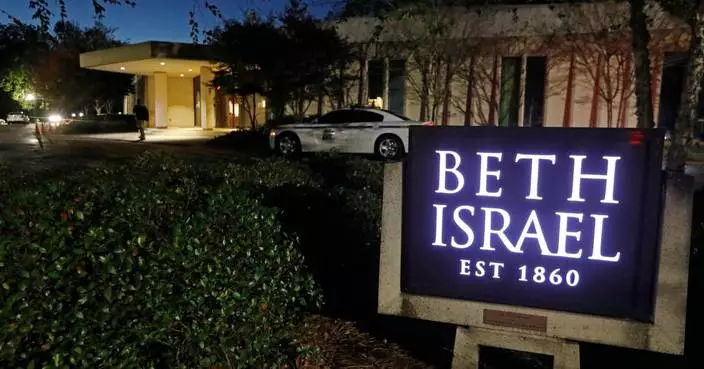SEOUL, South Korea (AP) — South Korea’s truth commission concluded the government bears responsibility for facilitating a foreign adoption program rife with fraud and abuse, driven by efforts to reduce welfare costs and enabled by private agencies that often manipulated children’s backgrounds and origins.
The landmark report released Wednesday followed a nearly three-year investigation into complaints from 367 adoptees in Europe, the United States, and Australia, representing the most comprehensive examination yet of South Korea’s foreign adoptions, which peaked under a succession of military governments in the 1970s and ’80s.
The government-appointed Truth and Reconciliation Commission said it confirmed human rights violations in 56 of the complaints and aims to review the remaining cases before its mandate expires in late May.
However, some adoptees and even a commission investigator criticized the cautiously written report, acknowledging that investigative limitations prevented the commission from more strongly establishing the government’s complicity.
That investigator, Sang Hoon Lee, also lamented that the panel on Tuesday deferred assessments of 42 other adoptees’ cases, citing a lack of documentation to sufficiently prove their adoptions were problematic. Lee and the commission chairperson, Sun Young Park, did not specify which types of documents were central to the discussions.
However, Lee implied that some members of the commission's decision-making committee were reluctant to recognize cases in which adoptees had yet to prove beyond doubt that the biological details in their adoption papers had been falsified — either by meeting their birth parents or confirming information about them.
Most Korean adoptees were registered by agencies as abandoned orphans, although they frequently had relatives who could be easily identified or found, a practice that often makes their roots difficult or impossible to trace. Government data obtained by The Associated Press shows less than a fifth of 15,000 adoptees who have asked South Korea for help with family searches since 2012 have managed to reunite with relatives.
Lee said the committee’s stance reflects a lack of understanding of the systemic problems in adoptions and risks excluding many remaining cases.
“Personally, I find yesterday’s decision very regrettable and consider it a half-baked decision,” Lee said.
After reviewing government and adoption records and interviewing adoptees, birth families, public officials and adoption workers, the commission assessed that South Korean officials saw foreign adoptions as a cheaper alternative to building a social welfare system for needy children.
Through policies and laws that promoted adoption, South Korea’s military governments permitted private adoption agencies to exercise extensive guardianship rights over children in their custody and swiftly transfer custody to foreign adopters, resulting in “large-scale overseas placements of children in need of protection,” the commission said.
Authorities provided no meaningful oversight as adoption agencies engaged in dubious or illicit practices while competing to send more children abroad. These practices included bypassing proper consent from biological parents, falsely documenting children with known parents as abandoned orphans, and switching children’s identities, according to the commission’s report. It cited that the government failed to ensure that agencies properly screened adoptive parents or prevent them from excessively charging foreign adopters, who were often asked to make additional donations beyond the standard fees.
South Korea’s government has never acknowledged direct responsibility for issues surrounding past adoptions. The Ministry of Health and Welfare said it had not formally received the commission’s report as of Thursday morning but planned to “actively review” its recommendations. It said “efforts to improve the adoption system will continue,” citing its preparations to enforce a new law taking effect in July that’s designed to strengthen the state’s responsibility over adoptions.
The commission’s findings broadly aligned with previous reporting by The AP. The AP investigations, which were also documented by Frontline (PBS), detailed how South Korea’s government, Western countries and adoption agencies worked in tandem to supply some 200,000 Korean children to parents overseas, despite years of evidence that many were being procured through questionable or outright unscrupulous means.
The military governments implemented special laws aimed at promoting foreign adoptions, removing judicial oversight and granting vast powers to private agencies, which bypassed proper child relinquishment practices while shipping thousands of children to the West every year. Western nations ignored these problems and sometimes pressured South Korea to keep the kids coming as they focused on satisfying their huge domestic demands for babies.
“The commission determined that the state violated the human rights of adoptees protected under the constitution and international agreements, by neglecting its duty to ensure basic human rights, including inadequate legislation, poor management and oversight, and failures in implementing proper administrative procedures while sending large numbers of children abroad,” the commission said in a statement. It said the government “actively utilized” foreign adoptions, which “required no budget allocation,” rather than strengthening a social safety net for needy children.
When asked why the commission’s report focused on the government’s negligence and monitoring failures, rather than highlighting its more direct responsibility for creating a system that put children at risk, Lee acknowledged a need for a deeper investigation into the government’s role, citing limitations in the commission’s reach.
A more extensive review of the systemic problems would require a closer look at adoptions to the United States, which by far was the largest recipient of Korean children, Lee said. U.S. adoptees accounted for a smaller number of complaints received by the commission, most of which were filed by adoptees in Europe.
“Rather than producing a final conclusion, we focused on pointing out the problems the best we could,” Lee said.
The commission recommended the government issue an official apology over the problems it identified and develop plans to address the grievances of adoptees who discovered that the biological origins in their adoption papers were falsified. It also urged the government to investigate citizenship gaps among adoptees sent to the United States and to implement measures to assist those without citizenship, who may number in the thousands.
During the news conference, Yooree Kim, who was sent at age 11 by an adoption agency to a couple in France without her biological parents’ consent, pleaded for the commission to strengthen its recommendations.
She said the government should encourage broader DNA testing for biological families to increase the chances of reunions with adoptees and officially declare an end to foreign adoptions. She said adoptees who fell victim to illicit practices should be entitled to “compensation from the Korean government and adoption agencies, without going through lawsuits.”
South Korea's practices in the past seven decades formed what’s believed to be the world’s largest diaspora of adoptees. Recent reforms, including a 2011 law that required foreign adoptions go through family courts, have led to a significant decline, with only 79 cases of South Korean children placed abroad in 2023.
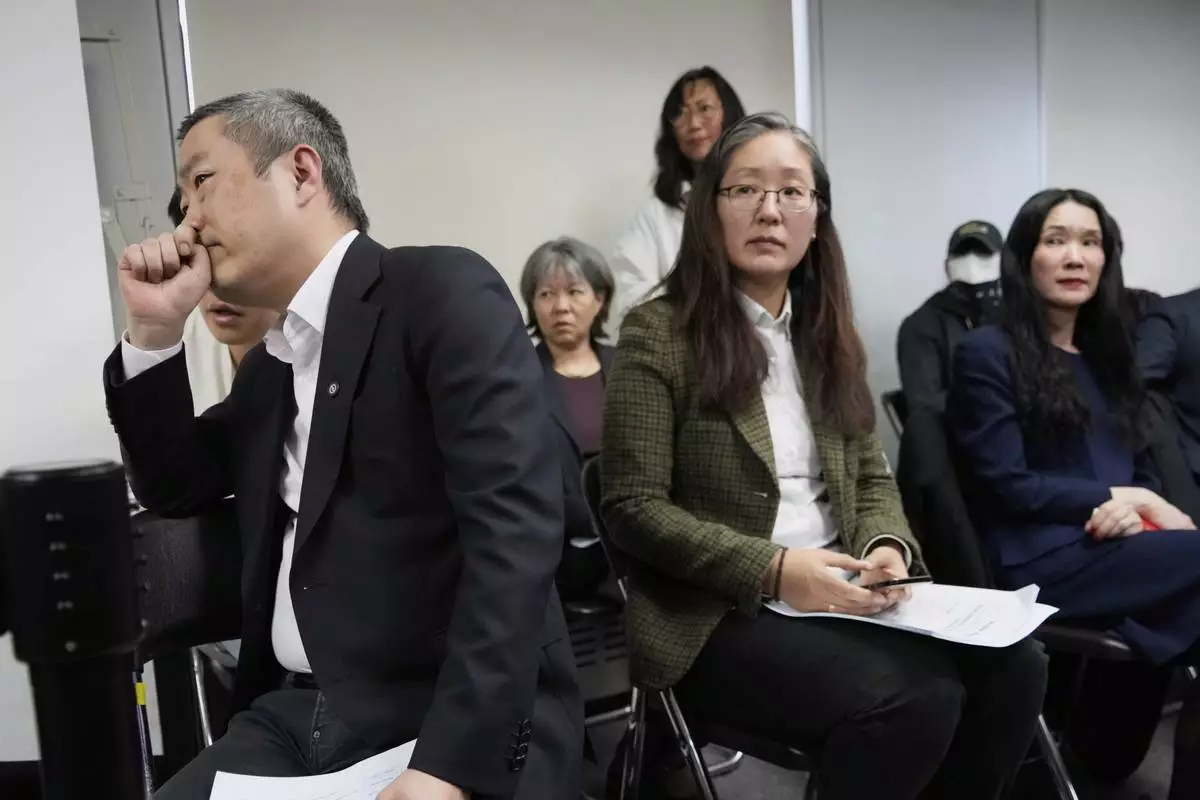
Peter Møller, left, Boonyoung Han, co-founders of the Danish Korea Rights Group, and adoptee Yooree Kim, right, attend a press conference at the Truth and Reconciliation Commission in Seoul, South Korea, Wednesday, March 26, 2025. (AP Photo/Ahn Young-joon)
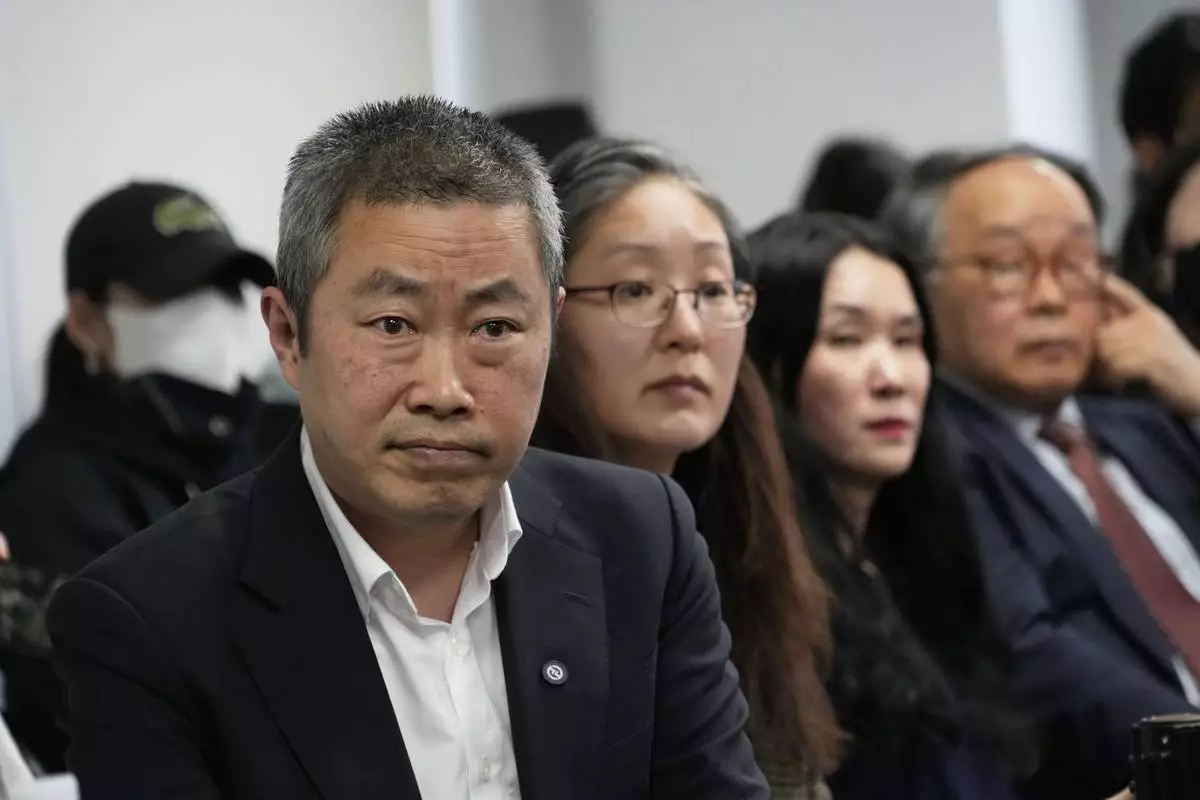
Peter Møller, left, Boonyoung Han, second from left, co-founders of the Danish Korea Rights Group, and adoptee Yooree Kim, second from right, attend a press conference at the Truth and Reconciliation Commission in Seoul, South Korea, Wednesday, March 26, 2025. (AP Photo/Ahn Young-joon)
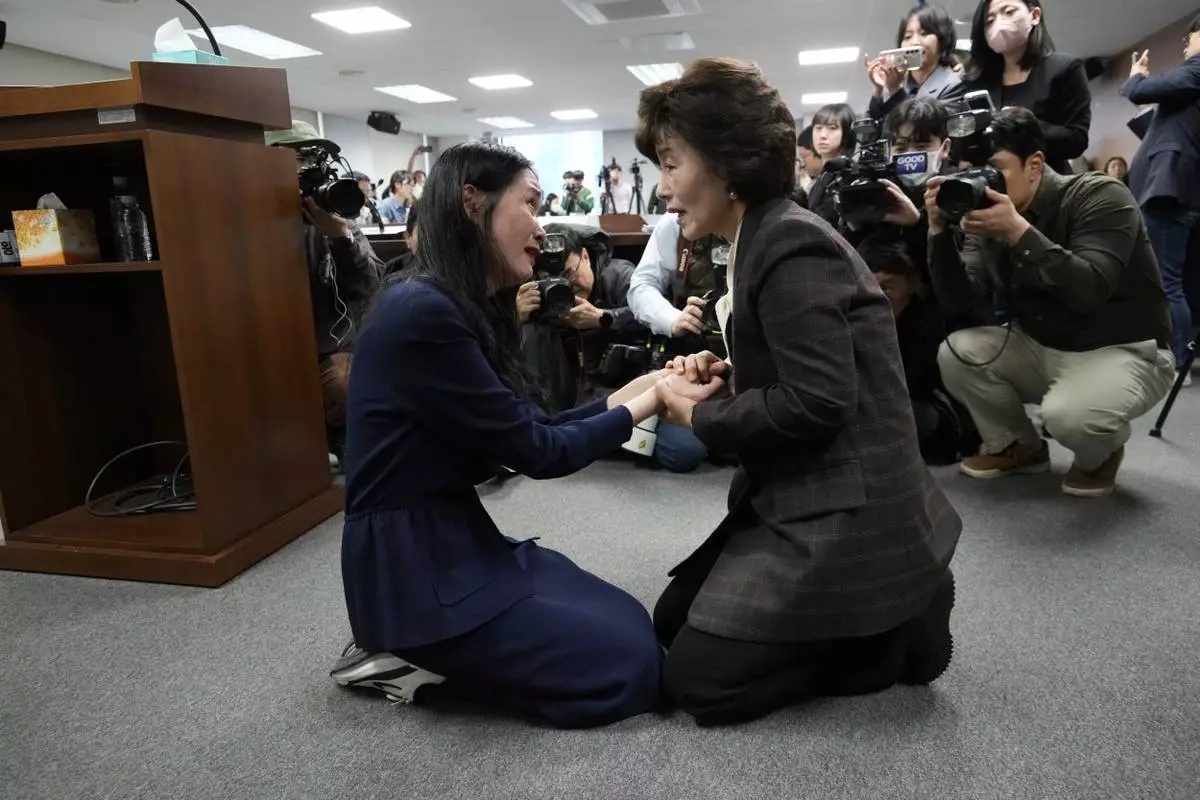
Truth and Reconciliation Commission Chairperson Park Sun Young, right, comforts adoptee Yooree Kim during a press conference in Seoul, South Korea, Wednesday, March 26, 2025. (AP Photo/Ahn Young-joon)


